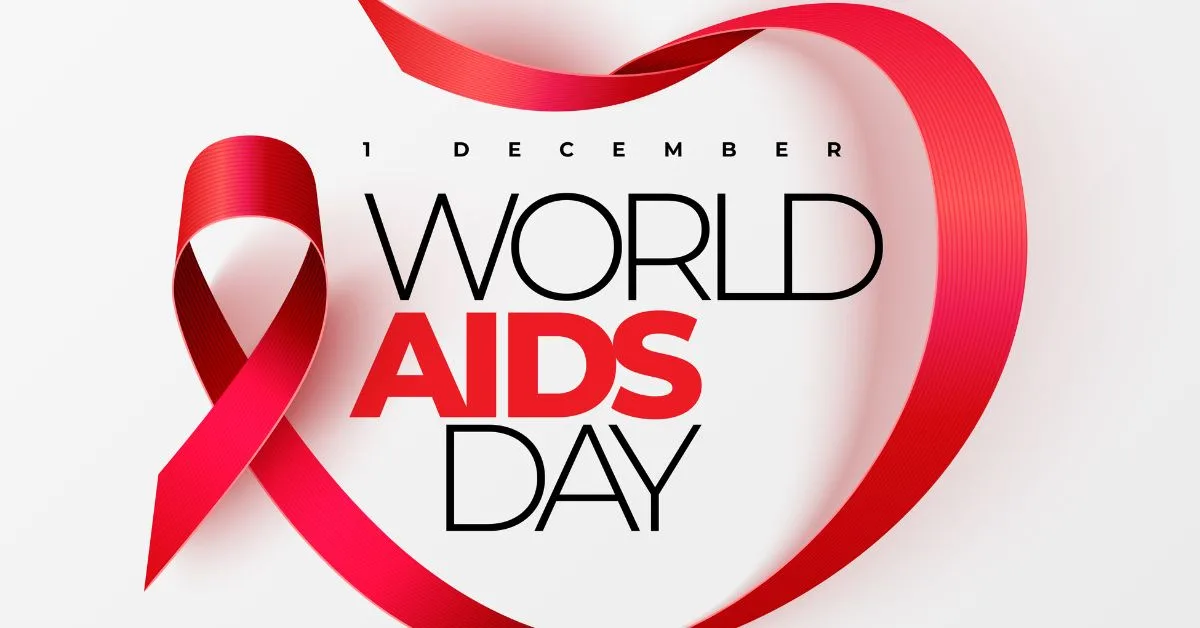Title: National AIDS Control Programme In India
Introduction:
National AIDS Control Programme in India (NACP) is a comprehensive and organized initiative created for dealing with the problems caused by the worldwide epidemic of HIV/AIDS there. The National AIDS Control Organization (NACO), a division of the Ministry of Health and Family Welfare, is in charge of carrying out the program. HIV/AIDS is very common in India, and the NACP is essential to the prevention, control, and treatment of the illness.
Historical Overview: In India, the outbreak of HIV/AIDS increased to popularity in the late 1980s and early 1990s. The epidemic encountered with an absence of knowledge, judgment, and an inadequate healthcare system to handle the growing issues during the early stages of response. The National AIDS Control Programme was launched by the Indian government in recognition of the gravity of the situation in 1992 as a program supported systematically we celebrated as Wolrd AIDS Day 2023 this year.
Objectives of National AIDS Control Programme In India:

In India, the NACP has undergone several stages of development, each with different objectives. The main goals consist of:
1. Prevention of New Infections: Through focused interventions, awareness campaigns, and education, the program aims to lower the incidence of new HIV infections.
2. Providing Complete Care: The NACP seeks to offer individuals living with HIV/AIDS a full range of services, such as counseling, antiretroviral therapy (ART), and support groups.
3. Reducing Social Stigma and Discrimination: By raising awareness and fighting for the rights of those who are impacted, NACP aims to lessen the social stigma attached to HIV/AIDS.
4. Strengthening Healthcare Infrastructure: The program’s objective is to increase healthcare systems’ ability to accurately identify, treat, and handle HIV/AIDS cases.
5. Research And Survillance: The NACP places a strong emphasis on research and monitoring in order to understand the dynamics of the epidemic improved, making evidence-based decision-making possible.
Phases of NACP:
There have been multiple phases to the National AIDS Control Programme, each with unique strategies and objectives.
NACP I (1992–1999):
Prevention, control, and raising of public awareness of HIV/AIDS were the main objectives. By establishing infrastructure and basic healthcare facilities, it set the stage for later phases.
NACP II (1999–2006):
This phase broadened the program’s focus to include HIV/AIDS-related care, support, and treatment. In order to effectively reach groups at high risk, targeted interventions were implemented.
NACP III (2007–2012): placed importance on a more thorough and integrated approach. It placed a high priority on treating the social determinants of the epidemic, expanding treatment services, and promoting prevention among high-risk populations.
NACP IV (2012–2017): The fourth phase concentrated on maintaining interventions and guaranteeing that the gains from the previous phases were maintained the quality of the services. The necessity of increased community involvement was also emphasized.
NACP V (2017–2024): The continuous phase continues to place a high priority on testing, treatment, and prevention. It seeks to maintain equitable access to high-quality care while accelerated the decrease in new infections.
Key Components and Strategies:
The NACP uses a multifaceted approach that includes the following elements for fighting HIV/AIDS:
1. Prevention and Education
a. Targeted Interventions: The NACP identifies and works with high-risk populations, including drug injecting users, transgender people, sex workers, and men who have sex with men (MSM).
b. Promotion of Condom Use: The initiative advocates for the use of condoms as an essential preventive measure.
c. Behavior Change Communication: The goal of social and behavior change communication initiatives is to encourage safer behaviors and increase public awareness.
2. Assessment and Guidance
a. Volunteer Counseling and Testing Centers (VCTCs): These facilities offer private testing as well as counseling to help people find out if they are HIV positive.
3.Therapy and Attention
a. Antiretroviral Therapy (ART): In order to guarantee that those living with HIV/AIDS have access to life-saving medicine, NACP has increased the amount of ART that is provided.
b. Integrated Counseling and Testing Centers (ICTCs): These facilities aid in the early detection of HIV and offer testing and counseling services.
4. Developing Infrastructure and Increasing Capacity
a. Healthcare Infrastructure: The program’s main goal is to improve the healthcare system, which includes teaching medical staff effective HIV/AIDS management and treatment techniques.
5. Community Engagement
a. Community Care Centers: These facilities are essential for assisting those managing with HIV/AIDS, building a sense of belonging, and lowering social isolation.
6.Investigation and Monitoring
a. Surveillance Systems: In order to track the epidemic’s progress, identify hotspots, and adjust interventions appropriately, NACP depends on reliable surveillance systems.
b. Research Initiatives: In order to create evidence-based plans and comprehend how the epidemic is changing, the program funds research in these areas.
Challenges and Mitigation:
While the NACP has achieved great progress, a number of issues still exist:
Stigma and Discrimination: One of the biggest challenges to HIV/AIDS testing and treatment is the social stigma attached to the disease. NACP uses advocacy and awareness-raising efforts to address this.
High-Risk Populations: Due to social and legal restrictions, it can be difficult to effectively reach and provide services to high-risk populations, such as MSM and sex workers. NACP uses focused interventions to address these issues.
Low Awareness: In some areas and communities, there is still a low level of awareness about HIV/AIDS despite efforts to raise it. To reach distant areas, NACP keeps funding education initiatives.
Resource Restrictions: Sufficient funding is essential to the NACP’s success. Financial limitations may limit the scope and efficacy of interventions. Maintained funding promotion is a continuous effort.
Coordination and Integration: The program’s success depends on ensuring smooth coordination between many different parties, such as governmental organizations, non-governmental organizations, and healthcare providers.
Successes and Impact:
The NACP has made a number of noteworthy advancements:
Reduction in New Infections: Particularly in critical populations, the program has helped to lower the number of new HIV infections.
Improved Access to Treatment: A greater number of individuals living with HIV/AIDS are receiving treatment, which has improved their quality of life, thanks to the growth of ART services.
Better Testing and Awareness: Raising testing rates and highlighting HIV/AIDS have been made possible by testing centers and awareness campaigns.
Empowerment of the Community: People have felt less judgmental and more empowered as a result of communities being involved in the design and execution of interventions.
International Recognition: India is now regarded as a major participant in the global response to the HIV/AIDS pandemic as a result of its efforts in the fight against the disease.
Looking Ahead:
There are several important areas of future focus for NACP as it advances:
Creative Interventions: Using cutting-edge tools and approaches to reach a range of demographics and boost service effectiveness.
Resolving Socioeconomic Determinants: Recognizing and resolving the poverty and gender inequality that are socioeconomic determinants of HIV/AIDS transmission.
Youth Engagement: Directing interventions to stop the spread of new infections and encourage healthy lifestyle choices among young people.
Research and Development: Ongoing funding for studies to comprehend new problems, create fresh approaches to prevention, and enhance the results of treatment.
International cooperation: working together with foreign organizations and nations to exchange resources, experiences, and best practices in the worldwide fight against HIV/AIDS.
Conclusion:
In Conclusion, the National AIDS Control Programme in India is a dynamic and ever-evolving program that is essential to addressing the multifaceted issues raised by the HIV/AIDS pandemic. The program has significantly improved prevention, treatment, and support services through its multi-phase approach. While there have been accomplishments, more work needs to be done to address enduring issues and guarantee a long-lasting and successful response to HIV/AIDS in India. Its commitment to research, community involvement, and innovation will be essential in determining how NACP develops in the future and how it affects the population’s health and well-being.
FAQ: National AIDS Control Programme in India
When National AIDS Control Programme Was Launched In India?
In 1992 noticed the introduction of the National AIDS Control Programme (NACP) in India. Since then, the program has undergone multiple phases, each with distinct objectives and approaches to combat the HIV/AIDS epidemic in the nation. The National AIDS Control Organization (NACO), a division of India’s Ministry of Health and Family Welfare, is in charge of carrying out the NACP.
Activities of National AIDS Control programmes
The following are a few typical tasks performed by National AIDS Control Programs: Programs for Prevention: -Educating the public about HIV prevention and transmission through public awareness campaigns. -Distributing condoms and encouraging responsible sexual behavior. -Putting initiatives in place to lower HIV transmission from mother to child. -Applying targeted preventative measures to populations at high risk. Assessment and Guidance: -Increasing the availability of HIV testing services, such as voluntary testing and counseling (VCT). -Encouraging routine testing for HIV, particularly in medical settings. -Maintaining confidentiality and offering therapy to those who are being tested. Therapy and Attention: -Giving people living with HIV antiretroviral therapy (ART). -Guaranteeing access to healthcare for illnesses associated with HIV/AIDS. -Putting plans in place to improve treatment regimen adherence. Assistance Services: -Establishing support networks for HIV/AIDS patients. -Providing counseling and psychosocial support. Addressing the discrimination and stigma around HIV/AIDS. Observation and Tracking: -Monitoring HIV/AIDS cases on a regular basis. -Tracking changes in the incidence and prevalence of HIV. -Assessing the results of interventions and modifying plans of action accordingly. Building Capacity: -Teaching community workers and medical professionals about HIV/AIDS prevention, treatment, and care. -Bolstering the healthcare system to enable the provision of services related to HIV. Advocacy and Policy: -Creating and carrying out HIV/AIDS prevention and treatment policies. -Promoting funding and assistance on a national and worldwide scale. Investigation and Originality: -Encouraging research projects aimed at curing, treating, and preventing HIV. -Encouraging the use of cutting-edge tools and strategies in the fight against HIV/AIDS.
